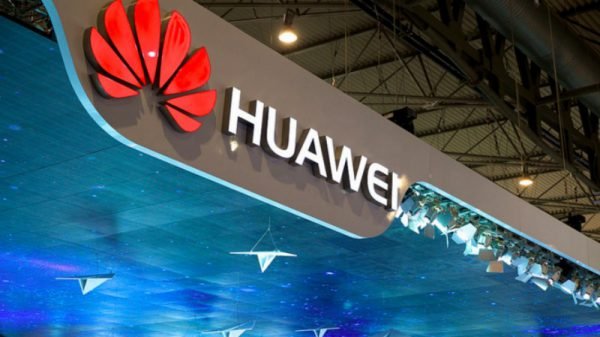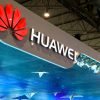5G Technology: The Future of Communication
Background about 5G technologies
Since 5G technology is gradually entering our daily lives and the phrase is used more frequently, we deemed it necessary to explain what it truly is to you.
The beginning of 1G in 1979
The 1G, or first “Generation,” mobile network was the first to be commercially automated. Nippon Telegraph & Telephone (NTT) launched it in Tokyo, and by 1979, it had been widely implemented throughout all of Japan.
Even though it was quite expensive, adaptation happened rather quickly. The technology had enormous potential, but there were still some glaring problems that needed to be fixed, including poor sound and coverage, incompatibility with other 1G networks due to different resonance frequencies, no roaming among multiple carriers, the ability to only send and receive audio, and a lack of encryption support for weak security. Furthermore, pricey and not intended for the general public, this technology.
2G: The Revolution of Mobility, released in 1991
Finland was the birthplace of the second mobile phone network generation in 1991. Introduced as part of the global mobile communication system (GSM), 2G introduced a wireless adapter that was far better than what 1G had to offer. The largest innovation was the inclusion of multi-media rather than simply speech. In addition, it outperformed 1G technology in terms of coverage and capacity.
The next major shift was cultural; people began sending texts, pictures, and even movies.
Even still, 2G had several significant limitations, particularly given that its maximum available speed was 236 Kbps.
2001’s 3G: The Year of Better Connectivity
NTT DoCoMo introduced 3G in 2001, thereby starting the “packet-switching” revolution and assuring considerably greater connectivity for “data packets,” which power internet connectivity. Standardisation was one of the main forces behind 3G technology. In a marketplace that had previously been overrun by several suppliers and protocols, 3G sought to offer a single network standard. The capacity to obtain data from any point in the globe and worldwide roaming services were made possible by this standardisation. It was obviously designed for internet use and multimedia sharing because it featured a 2Mbps capacity.
The ability to send enormous amounts of data also paved the door for a number of new internet-based services, including voice over IP (such as Skype), streaming video, video conferencing, and location-based services. The 3G period also saw the launch of various “smartphones,” such the Blackberry and iPhone. These gadgets turned the old cellphone into a portable mini-computer, which significantly altered how it was utilised.
2009, 4G: Data from modern smartphones
2009 saw the commercial implementation of the Long Term Evolution (LTE) 4G technology in Oslo and Stockholm. Since then, it has rapidly expanded to the majority of the world’s countries, including the US. High-quality streaming is now a possibility because of this network generation’s theoretical data rates of 200 Mbps.
Due to its usage of a larger frequency band than 2G and 3G, 4G also resolved one of their previous limitations. This is a topic that will continue in 5G.
Getting ready for 5G network and its difficulties
Although there is no doubt that 5G represents an enormous advance in data, technology, and connection, there are still a few questions regarding its advantages versus disadvantages. Due to the fact that 5G requires more terminals than 4G and new infrastructures in order to function efficiently, the expense of implementation is four times greater than it was for 4G. It is also dependent on other advancements to be as productive feasible.
However, there are also concerns about the net’s objectivity, the environmental impact of this novel technology, and the legal issues around user protection.
Several professional industries are already updating their work products to be interoperable with 5G, which demonstrates how attractive the technology is despite all those limitations and unresolved issues.
The Future of Connectivity, Technology, and Data with 5G
A variety of technological developments will occur as we transition from 4G to 5G technology. When compared to 4G, the data transmission will rise, as will the transfer of data per user, reducing the waiting time by 40 times. Moreover, energy use will be optimised, which will benefit the environment. The same network can handle many demands, from watching TV to handling vital needs, all at once thanks to the advancements in 5G technology.
In the opinion of the European Commission, the advantages of this new technology might be enormous and are projected to total 113 billion euros annually for the European economy by 2025 spanning the health, energy, transport, and automotive sectors.
Every ten years, as demonstrated by the background of 5G, speed has increased, and this trend will continue with 5G. We will see faster speeds with 5G thanks to improved mobile broadband that supports high data rates. Also, 5G will deliver a very dependable and low latency connection, enabling shorter wait times, which is great for crucial missions. Moreover, it will feature extensive machine-type connection and communication that will precisely handle linked things.
The greatest difference between 5G and all the other technologies is that it will handle all 3 of these capabilities on a single network that can take in and supply the right Data for every demand.
The interactions will change with 5G technologies
We may have man to man and later human to machine contacts during the preceding technological progression, from 1G to 4G. With the development of the 2G and 3G technologies, we had human contacts through technology, such as video conversations, social networking, or public safety. Then, we had 4G with fixed wifi, human-to-machine interactions, healthcare monitoring, or remote monitoring, which had previously been a significant change.
We now interact more with machines thanks to 5G. For instance, this will enable smart automobiles to communicate autonomously with one another or at the very least with infrastructure. Also, this will strengthen industrial automation and remove human supervision from video surveillance. Human involvement will become increasingly less essential with 5G as robots become more dependable due to greater connection.
Why is 5G necessary for data and connectivity?
In comparison to now, we will use 13 times as much data in 2025, predicts the communications regulator Ofcom. By 2025, there are expected to be 21 billion internet-connected gadgets, up from the current 7 billion. Many of these new gadgets will power and monitor our houses, city infrastructure, transportation, and other things; this network is referred to as the “Internet of Things” (IoT). It is hailed as one of the upcoming great digital revolutions, and because maintaining access to vital equipment managing our security and safety is crucial, faster network reaction times or lower latency will be needed.
A considerable improvement in data transport speed
Data transmission rates are expected to rise from 1Gbps to 20Gbps over 5G compared to 4G. As we noted in our previous Meet the experts piece, this improvement will allow users to obtain data and information much more quickly, which is crucial, particularly for emergency responders, the military, and essential reaction teams. So it’s not all excellent news. Better battery technology is required since 5G-enabled devices will have significant power consumption.
There are additional costs associated with this speed increase. Changes in the 5G radio, including the usage of higher frequency bands, have increased speed and decreased latency. These higher frequency bands, however, have a limited useful range and are often obstructed by structures. Excellent for factory automation, however operators would need a lot more 5G radios in cities to cover a given region, and it presently doesn’t handle rural areas at all.
The increased connectivity rates of 5G are expected to raise the danger for cyberattacks, giving hackers the chance to attack more equipment through weak linkages between internet-connected devices, even if 5G will expand the usage of IoT devices. Security issues are exacerbated as the number of IoT devices grows; 5G network-connected gadgets run the danger of hackers accessing and obtaining data, particularly personal information, at considerably quicker rates than ever before.
Uses of 5G technology in the Future
Future applications of 5G technology will make extensive use of its quick data transmission. For instance, in the public sphere, it is anticipated that video game consoles would become outdated as players switch to cloud computing to download games and applications. Video games and the video consoles we are accustomed to will no longer be necessary due to shorter wait times, easier access, and the smoother, more accurate remote actions made possible by 5G technology. This might alter the overall economic framework of the sector.
There are countless possibilities for 5G technology beyond the public sphere. The introduction of 5G technology might result in significant changes across many industries, including driverless vehicles, smart cities, remote medical care and surgeries, and Industry 4.0.
The application of 5G technology in the military sector
In the defence sector, 5G will give a better solution to military requirements; it has the potential to deliver increased coordination, hybrid networks, portability, cybersecurity, and resilience, shifting from one system for each need to one system for all needs. In your most crucial operations, high speed data transmissions will cut waiting times, boost situational awareness, and enhance communication between people on the field and at headquarters. Lower waiting times for remote control, more accurate drone control, and greater soldier native communication are all expected.


































Comment Template